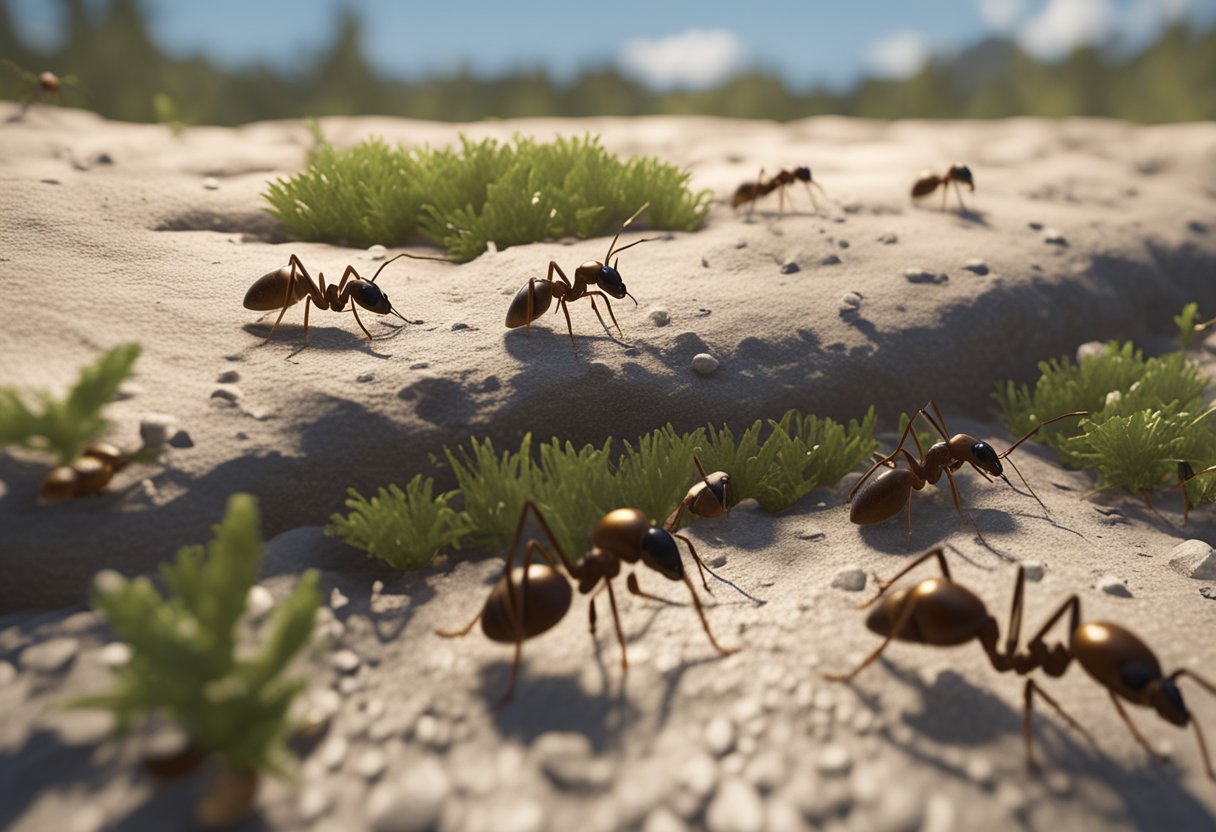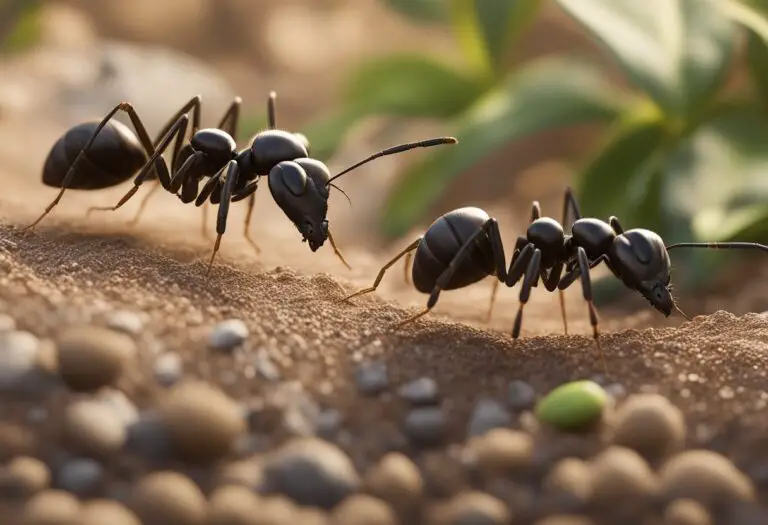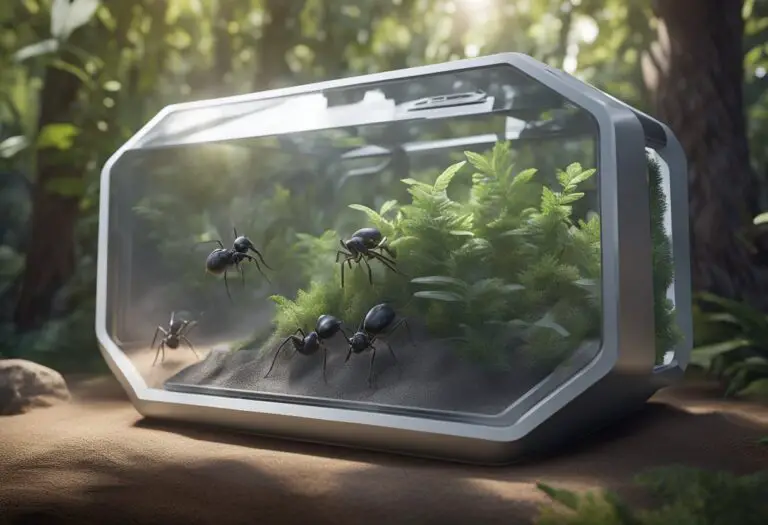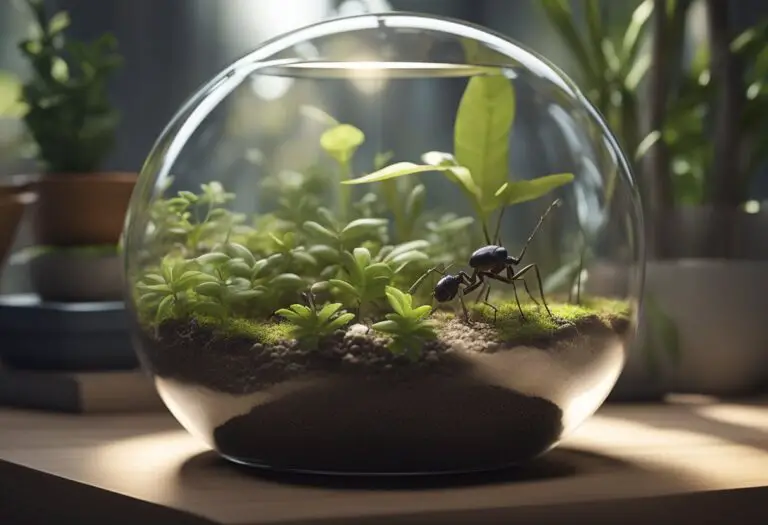When Do Ants Need a New Habitat? Understanding the Signs
Ants are fascinating creatures that can be found in a variety of habitats, ranging from forests to deserts. However, like all living organisms, ants require suitable habitats to survive and thrive. When their current habitat no longer meets their needs, ants must find a new one. But when do ants need a new habitat?
Ants need a new habitat when their current one becomes unsuitable or unsustainable. This can happen for a variety of reasons, such as changes in environmental conditions, depletion of resources, or overcrowding. When ants are no longer able to obtain the resources they need to survive, such as food, water, or shelter, they will begin to search for a new habitat. In some cases, ants may even be forced to abandon their current habitat due to factors such as natural disasters or human disturbance.
Ant Colony Life Cycle

Ants are social insects that live in colonies. Each colony has a life cycle that includes three main stages: colony establishment, colony maturation, and colony decline. Understanding the life cycle of an ant colony is important in determining when ants need a new habitat.
Colony Establishment
The first stage of an ant colony’s life cycle is colony establishment. This stage begins when a queen ant mates and starts a new colony. The queen lays eggs, which hatch into larvae. The larvae are fed by worker ants until they pupate and eventually emerge as adult ants.
During colony establishment, the colony is small and vulnerable. The queen and a few workers are responsible for caring for the brood and building the nest. The colony relies on the queen to lay eggs and produce more workers to help with nest construction and caring for the brood.
Colony Maturation
The second stage of an ant colony’s life cycle is colony maturation. During this stage, the colony grows in size and becomes more organized. The queen continues to lay eggs, and the number of workers increases.
As the colony grows, the ants begin to specialize in different tasks. Some ants become foragers, while others care for the brood or defend the nest. The colony becomes more efficient at gathering food and caring for the brood.
Colony Decline
The final stage of an ant colony’s life cycle is colony decline. As the queen ages, she produces fewer eggs, and the number of workers begins to decline. The colony becomes less organized, and the ants become less efficient at gathering food and caring for the brood.
Eventually, the queen dies, and the colony collapses. The remaining workers may try to start a new colony, but without a queen, they will not be successful.
In conclusion, understanding the life cycle of an ant colony is important in determining when ants need a new habitat. Ant colonies go through three main stages: colony establishment, colony maturation, and colony decline. When a colony reaches the decline stage, it may be time to consider providing a new habitat for the ants.
Signs of Habitat Unsuitability

Ants can live in their habitat for years, but sometimes they need a new one. Here are some signs that indicate that the current habitat is no longer suitable for the ants.
Resource Depletion
Ants require food, water, and shelter to survive. If their habitat no longer provides these resources, it can be a sign that the ants need to move. For example, if the food source has been depleted or contaminated, the ants may start to starve or get sick. Similarly, if the water source has dried up or become polluted, the ants may not have enough water to survive.
Overcrowding
Ants need enough space to move around and carry out their activities. If the habitat becomes too crowded, the ants may start to feel stressed and agitated. This can lead to fights, reduced reproduction, and even death. Overcrowding can also lead to a lack of resources, as there may not be enough food or water for all the ants.
Environmental Changes
Ants are adapted to live in specific environmental conditions. If these conditions change, the habitat may no longer be suitable for the ants. For example, if the temperature becomes too hot or too cold, the ants may not be able to regulate their body temperature. Similarly, if the humidity level changes or the habitat becomes too dry, the ants may not be able to survive.
In summary, ants may need a new habitat if their current one no longer provides enough resources, becomes overcrowded, or undergoes significant environmental changes. It is important to monitor the ants’ behavior and habitat conditions to ensure their well-being.
Natural Triggers for Relocation

Ants are known for their ability to adapt to various environments, but there are times when they need to relocate to a new habitat. Understanding the natural triggers that cause ants to relocate can help in anticipating and managing ant populations. The following are some of the natural triggers that cause ants to relocate.
Seasonal Migration
Ants are known to migrate to new habitats during certain times of the year. This is especially true for species that live in temperate regions where the weather changes dramatically throughout the year. During the winter, ants may move to deeper soil layers or find shelter in nearby structures. In the spring, ants may move to new habitats to find food, water, and nesting sites.
Flooding or Rainfall
Heavy rainfall or flooding can cause ants to relocate to higher ground. Ants that live in soil may be forced to move to nearby structures or vegetation to avoid drowning. Some species of ants can even form rafts to stay afloat during floods and move to new habitats.
Predator Threat
Ants may also relocate to avoid predators. This is especially true for species that are preyed upon by other insects or animals. Ants may move to new habitats where they can find better protection or where the predator populations are lower.
Understanding the natural triggers that cause ants to relocate can help in managing ant populations. By anticipating when ants are likely to relocate, it is possible to take steps to prevent them from infesting structures or causing damage.
Human-Induced Factors

Land Development
Ants rely on their habitat for survival, and any changes to their environment can have a significant impact on their population. Human-induced factors such as land development can lead to the destruction of ant habitats. When land is cleared for development, it destroys the natural habitat of ants, which can lead to their displacement or death.
In addition to habitat destruction, land development can also lead to the fragmentation of ant populations. When an ant colony is split into smaller groups due to the development of roads or buildings, it can lead to a reduction in genetic diversity and a decrease in the overall health of the colony.
Pesticide Exposure
Pesticides are commonly used to control pests in agricultural and residential settings. However, the use of pesticides can have unintended consequences on ant populations. Pesticides can kill ants directly or indirectly by contaminating their food sources.
Pesticides can also disrupt the behavior of ants, making it difficult for them to find food or communicate with other members of their colony. This can lead to a decrease in the overall health of the colony and a reduction in the number of ants.
It is important to note that not all pesticides are harmful to ants. Some pesticides are designed to target specific pests and are less harmful to non-target species such as ants. However, it is important to use pesticides responsibly and to follow all label instructions to minimize the impact on ant populations.
Ant Species-Specific Needs

Ants are incredibly diverse insects that inhabit many different environments around the world. Different ant species have unique needs and preferences when it comes to their habitat. Understanding these needs can help ensure that ant colonies thrive and remain healthy.
Soil-Dwelling Ants
Soil-dwelling ants, as their name suggests, live in the soil. These ants require a habitat that provides them with access to moisture and nutrients. They also need a substrate that is suitable for digging and tunneling. Soil-dwelling ants may prefer to nest in areas with sandy or loamy soils, as these substrates are easier to excavate.
In addition to soil quality, soil-dwelling ants also require access to food. Many soil-dwelling ants are omnivorous, meaning they consume both plant and animal matter. Providing a diverse array of food sources can help ensure that soil-dwelling ants remain healthy and active.
Wood-Nesting Ants
Wood-nesting ants, on the other hand, require a different type of habitat. These ants live inside wooden structures, such as tree trunks or dead logs. They require a substrate that is suitable for tunneling, such as soft or rotting wood.
Wood-nesting ants may also require access to moisture. Some species of wood-nesting ants may build their nests in areas with high humidity, such as near bodies of water or in damp soil.
In addition to substrate and moisture, wood-nesting ants also require access to food. Many wood-nesting ants are carnivorous, meaning they feed on other insects or small animals. Providing a diverse array of prey items can help ensure that wood-nesting ants remain healthy and active.
Overall, understanding the specific needs of different ant species can help ensure that ant colonies thrive and remain healthy. By providing suitable substrates, moisture, and food sources, ant colonies can continue to play important roles in ecosystems around the world.
Research on Ant Habitat Selection

Ants are known for their ability to adapt to a variety of habitats. However, they do require certain conditions to thrive and reproduce. Research has shown that ants select habitats based on a variety of factors, including food availability, moisture levels, temperature, and shelter.
One study conducted by researchers at the University of California, Berkeley found that the presence of food was the most important factor in ant habitat selection. Ants were more likely to colonize areas with a high density of food resources, such as fallen fruit or sugary liquids.
Moisture levels also play a crucial role in ant habitat selection. Ants require a certain level of humidity to survive, and they will avoid habitats that are too dry or too wet. In addition, temperature is an important factor, as ants are cold-blooded and require a warm environment to thrive.
Shelter is another important consideration for ants when selecting a habitat. Ants will often nest in protected areas, such as under rocks or logs, or in the soil. They may also build elaborate nests out of leaves, twigs, and other materials.
Overall, research has shown that ants are highly adaptable and can thrive in a variety of habitats. However, they do require specific conditions to survive and reproduce, including access to food, appropriate moisture levels, and shelter. By understanding these factors, researchers and conservationists can better protect and manage ant populations in the wild.







